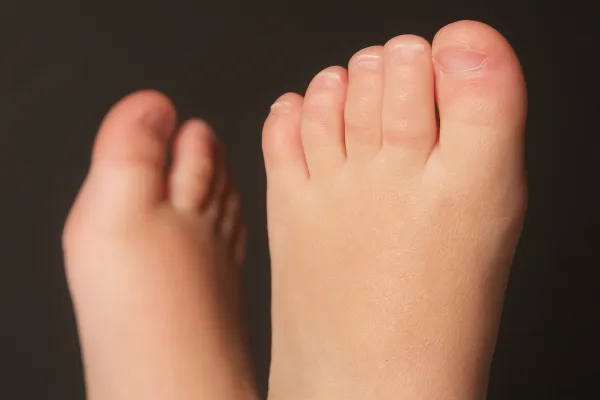
Why Your Toes Might Be Numb – And What to Do About It
Have you ever noticed a tingling or “pins and needles” feeling in your toes that doesn’t go away? Maybe they feel oddly cold, or you’ve lost some sensation in one or more of them. Numb toes are more common than you might think — and they’re not always caused by tight shoes.
In this post, we’ll look at what might be causing that numbness, when it’s time to be concerned, and how a podiatrist can help get you back to comfort and confidence.
What Does Toe Numbness Feel Like?
Numbness can show up in different ways:
A fuzzy, tingling sensation (like your foot is “asleep”)
Loss of feeling or awareness in one or more toes
A sense of coldness even when your foot is warm
Difficulty feeling pressure or texture when walking
Sometimes it’s temporary and harmless — but if it keeps returning, or if you can’t trace the cause, it’s time to take a closer look.
Common Causes of Numb Toes
1. Nerve Compression or Irritation
The most common reason for numbness is pressure on a nerve, either from a tight shoe or something deeper like:
Morton’s Neuroma: A thickening of tissue around a nerve near the ball of your foot
Tarsal Tunnel Syndrome: Like carpal tunnel, but affecting the nerves near your ankle
A pinched nerve higher up, such as in the lower back
2. Circulation Problems
If blood isn’t flowing well to your toes, you might feel numbness or coldness. Poor circulation can be linked to:
Diabetes
Peripheral artery disease (PAD)
Long periods of sitting or inactivity
3. Footwear Issues
Shoes that are too tight, narrow, or lacking support can squeeze nerves or restrict blood flow, leading to numb toes. High heels and narrow toe boxes are common culprits.
4. Medical Conditions
Toe numbness can be a symptom of broader health conditions, including:
Diabetes (especially if it's poorly controlled)
Multiple sclerosis (MS)
Vitamin B12 deficiency
When Should You Be Concerned?
While occasional numbness isn’t always serious, you should seek help if:
It happens regularly or is getting worse
It affects your balance or ability to walk
You have diabetes or a known circulatory condition
It comes with pain, swelling, or skin colour changes
Early assessment can prevent long-term damage and help you manage any underlying issues effectively.
What Can a Podiatrist Do?
At our foot clinic in Dublin 9, we often see patients who’ve lived with numb toes for months — or even years — not realising that help is available.
We start with a full assessment to understand what’s happening, which might include:
Footwear checks
Nerve and circulation tests
Gait and posture analysis
Medical history review
From there, treatment may involve:
Custom orthotics to relieve nerve pressure
Advice on proper footwear
Targeted exercises to improve circulation
Referral or coordination with your GP if needed
In many cases, small changes can lead to big improvements.
Don’t Ignore the Signals
Your feet are full of nerves, muscles, and blood vessels working together. When something feels off — like persistent numbness — it's your body’s way of asking for attention.
Whether it’s a nerve being pinched, shoes that don’t fit quite right, or something deeper, getting to the root of it early can prevent further problems.
If You’ve Been Feeling Numb, You Don’t Have to Stay That Way
At Mary Moore Podiatry, we’re here to help you feel steady, safe, and supported — from your toes upward. If you’re based in Dublin 9 or Dublin 4 and experiencing ongoing foot discomfort, don’t wait. Book an appointment and let’s get your feet feeling more like you again.




